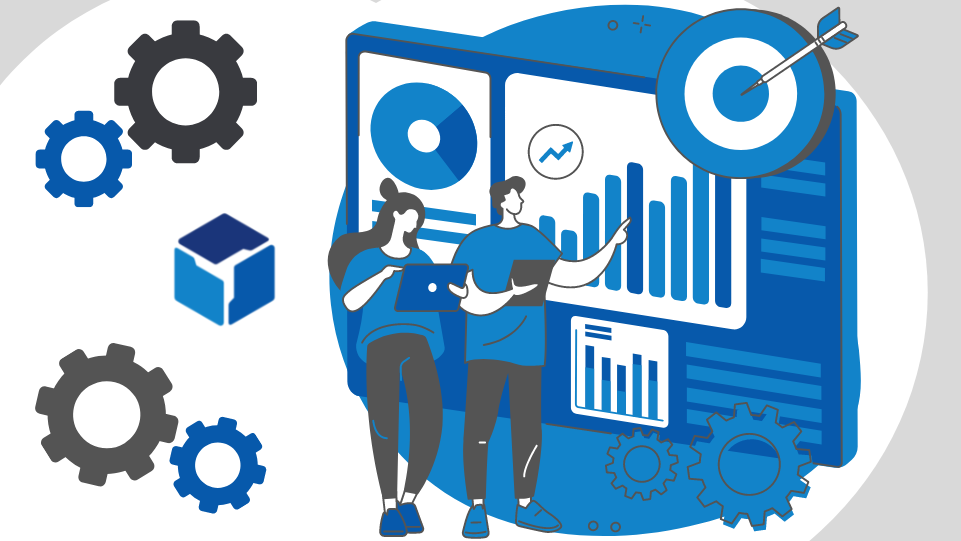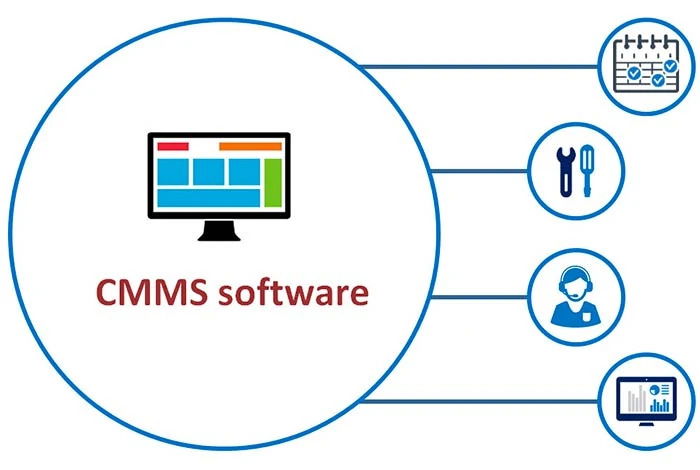Computerized Maintenance Management System (CMMS): Streamlining Asset Management for Optimal Efficiency

In the fast-paced world of facility and asset management, organizations are constantly seeking ways to optimize operations, reduce downtime, and maximize the lifespan of their assets. One technology that has revolutionized maintenance management is the Computerized Maintenance Management System (CMMS). In this news story, we will delve into the world of CMMS and explore its key features, benefits, and implementation strategies. Let's discover how CMMS Systems are streamlining asset management and revolutionizing maintenance operations.

1. Understanding Computerized Maintenance Management Systems (CMMS)
A Computerized Maintenance Management System (CMMS) is a software solution designed to streamline and automate maintenance operations. It provides a centralized platform to manage and track maintenance activities, work orders, asset information, and inventory. With a CMMS system, organizations can efficiently schedule and track preventive maintenance tasks, manage repairs, generate work orders, and maintain accurate records of maintenance history.CMMS systems offer a range of features that enhance asset management. These include asset tracking, maintenance planning, work order management, inventory control, and reporting capabilities. By digitizing and automating maintenance processes, CMMS systems enable organizations to streamline workflows, improve efficiency, and ensure timely maintenance and repairs.
2. Key Features of CMMS Systems
CMMS systems offer a wide array of features that empower organizations to effectively manage their assets and maintenance operations. Asset tracking allows businesses to maintain a comprehensive inventory of assets, including equipment, machinery, vehicles, and facilities. CMMS systems provide detailed asset information, such as maintenance history, warranty details, and replacement schedules, ensuring proactive management and optimized utilization of assets.Maintenance planning is another essential feature of CMMS systems. Organizations can create maintenance schedules, set up preventive maintenance tasks, and automate work order generation. By proactively scheduling maintenance activities, organizations can minimize downtime, prevent equipment failures, and extend the lifespan of their assets.Work order management capabilities within CMMS systems enable organizations to track and prioritize maintenance requests, assign tasks to technicians, and monitor progress. With real-time visibility into work orders, organizations can ensure timely completion of tasks, effective resource allocation, and efficient communication between maintenance teams.Inventory control is a crucial aspect of asset management, and CMMS systems provide features to streamline inventory management. Organizations can track spare parts, manage stock levels, automate reordering processes, and reduce unnecessary inventory carrying costs. By maintaining accurate inventory records, businesses can optimize stock levels, improve procurement efficiency, and minimize downtime caused by unavailability of spare parts.
3. Benefits of CMMS Systems
Implementing a CMMS system offers numerous benefits to organizations across industries. Firstly, it improves maintenance efficiency by automating processes, enabling proactive maintenance planning, and optimizing resource allocation. With CMMS, organizations can reduce downtime, increase asset reliability, and enhance overall operational efficiency.CMMS systems also contribute to cost reduction. By implementing preventive maintenance strategies, organizations can avoid costly equipment breakdowns, reduce emergency repairs, and extend the lifespan of assets. Inventory control features help optimize spare parts management, minimize stockouts, and prevent overstocking, leading to significant cost savings.Another key benefit of CMMS systems is data-driven decision-making. These systems provide real-time insights into asset performance, maintenance history, and key performance indicators (KPIs). By leveraging this data, organizations can make informed decisions regarding maintenance strategies, asset investments, and resource allocation, leading to improved outcomes and better ROI.CMMS systems also enhance compliance and documentation. Organizations can easily maintain records of maintenance activities, inspections, and compliance with regulations. This ensures accountability, transparency, and adherence to industry standards and regulations.
4. Implementing a CMMS System
Implementing a CMMS system requires careful planning and execution. Firstly, organizations need to assess their specific needs and goals. This includes evaluating the scale of the operation, the number of assets to be managed, and the desired level of integration with existing systems.Choosing the right CMMS vendor is crucial for successful implementation. Consider factors such as vendor reputation, system scalability, compatibility with existing infrastructure, and the level of customer support provided. Engaging key stakeholders and involving maintenance teams in the selection process can help ensure a smooth transition and higher user adoption rates.Once a CMMS system is selected, organizations need to plan and execute a thorough data migration strategy. This involves transferring asset data, maintenance history, work orders, and inventory records from existing systems to the new CMMS platform. Adequate training and support for employees using the CMMS system are essential for effective utilization and optimal results.
5. Future Trends in CMMS Systems
The field of CMMS is constantly evolving, with new trends and technologies shaping the future of maintenance management. One key trend is the integration of Internet of Things (IoT) technology with CMMS systems. IoT-enabled sensors and devices can provide real-time data on asset performance, condition, and usage patterns, enabling predictive maintenance and enhanced Asset Management.Artificial Intelligence (AI) and Machine Learning (ML) are also being integrated into CMMS systems, enabling advanced analytics, predictive maintenance models, and anomaly detection. AI-powered algorithms can analyze vast amounts of data to identify patterns, predict failures, and optimize maintenance strategies, leading to increased asset reliability and reduced maintenance costs.Mobile accessibility is another trend in CMMS systems, allowing technicians to access the system and perform tasks from mobile devices in the field. This enhances communication, reduces paperwork, and improves the efficiency of maintenance operations.
6. Embracing the Power of CMMS Systems
In the increasingly competitive business landscape, organizations cannot afford to neglect the importance of efficient maintenance management. Implementing a CMMS system empowers businesses to streamline asset management, optimize maintenance operations, and achieve higher levels of productivity and cost-effectiveness.By embracing the power of CMMS systems, organizations can reduce downtime, extend asset lifespans, and improve overall operational efficiency. Data-driven decision-making, proactive maintenance planning, and optimized resource allocation contribute to better outcomes and enhanced profitability.As technology continues to advance, CMMS systems will continue to evolve and adapt to industry needs. Embracing the power of CMMS systems is not only a wise investment in the present but also a strategic move to future-proof your maintenance management practices.In conclusion, CMMS systems offer a comprehensive solution for organizations seeking to streamline asset management and maintenance operations. With their key features, numerous benefits, and the ability to adapt to future trends, CMMS systems empower organizations to achieve optimal efficiency, reduce downtime, and maximize the lifespan of their assets. Embrace the power of CMMS systems and revolutionize your maintenance management practices for a more productive and successful future.Source URL: https://theomnibuzz.com/computerized-maintenance-management-system-cmms-streamlining-asset-management-for-optimal-efficiency/
